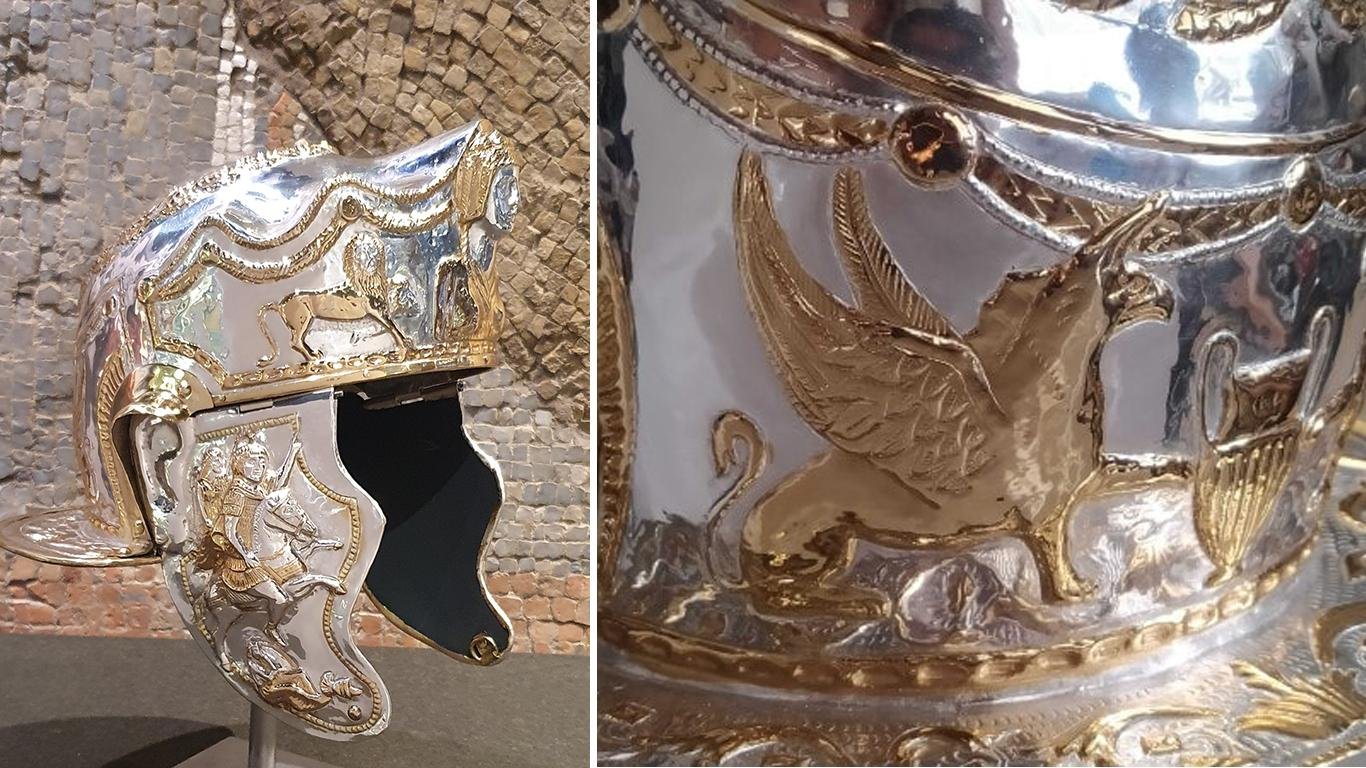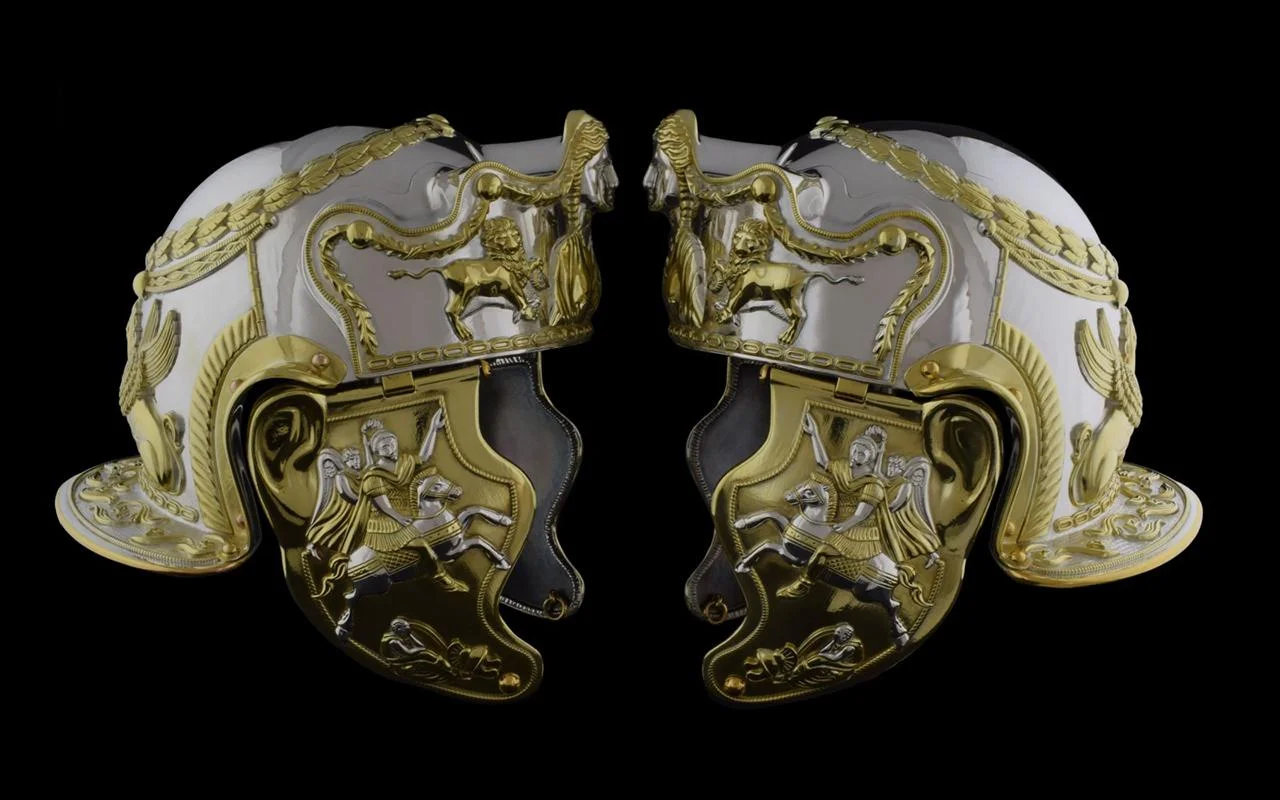Two replicas of a gilded silver Roman cavalry helmet have been meticulously crafted and put on display. Unearthed at an Iron Age site in Hallaton, near Market Harborough in Leicestershire, this artifact, dating back over 2,000 years, offers a glimpse into the martial splendor of the Roman Empire.

The Hallaton Helmet alongside the new replica. Credit: Leicestershire County Council Museums.
Discovered in 2001 by amateur archaeologists exploring the historic site, the helmet lay buried in thick mud for millennia, its once-shiny surface corroded and obscured. However, through the efforts of experts and volunteers, including silversmith Rajesh Gogna and archaeologist Francesco Galluccio, this piece of history has been resurrected.
Dating to the time of the Roman invasion of Britain in 43 CE, the helmet is believed to have been worn by a Roman cavalry officer, serving as a symbol of military might and imperial dominance.

An expert installs new helmet mounts. Credit Leicestershire County Council Museums.

The real helmet displayed with the other helmet parts which were buried alongside it at the site. Credit Leicestershire County Council Museums.
The painstaking process of reconstruction began with the careful extraction of the fragmented helmet from its muddy tomb. Over the course of a decade, conservators pieced together the intricate puzzle, revealing stunning details of the helmet’s design, including a laurel wreath encircling the bowl and a bust of a woman flanked by lions and rams.

Replica of the helmet by archaeologist Francesco Galluccio. Credit: Francesco Galluccio / Leicestershire County Council Museums.
To recreate the helmet, two distinct approaches were employed. One replica was produced by silversmith Rajesh Gogna, a senior lecturer at De Montfort University, using modern techniques such as computer-aided design (CAD), 3D printing, and electroforming, while the other was meticulously handcrafted by archaeologist Francesco Galluccio, employing traditional methods akin to those used by Roman smiths. The result is a pair of replicas, each capturing the essence of the original helmet in exquisite detail.
Detailed examination and documentation of the helmet’s features, including newly discovered elements like griffins on the rear bowl, paved the way for accurate reconstruction. Employing modern methods including computer-aided design (CAD), 3D printing, and electroforming, Rajesh Gogna transformed archaeological sketches into a 3D model. This model formed the foundation for crafting precise replicas.

The two identical replica helmets created by Rajesh. Credit: Leicestershire County Council Museums.
Francesco Galluccio’s approach harkened back to ancient methods, with an iron core forming the basis of the replica, overlaid with brass sheeting to mimic the original’s silver-gilt exterior.
Both replicas are exhibited—one at the Hallaton Museum and the other at the Harborough Museum in Market Harborough, alongside the original helmet. Through interactive exhibits and multimedia presentations, the story of the Hallaton Helmet comes to life.